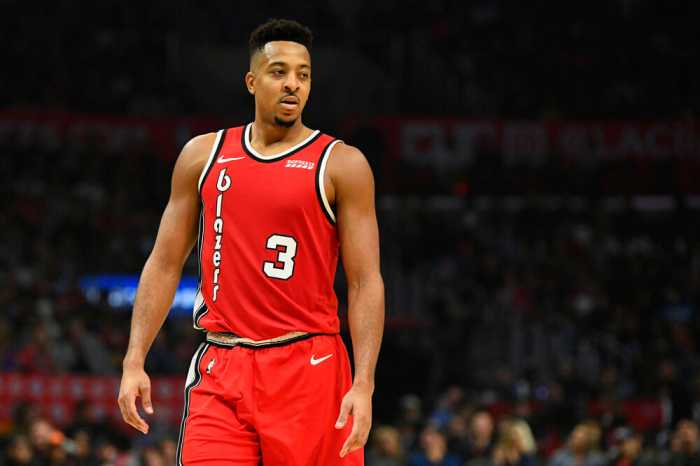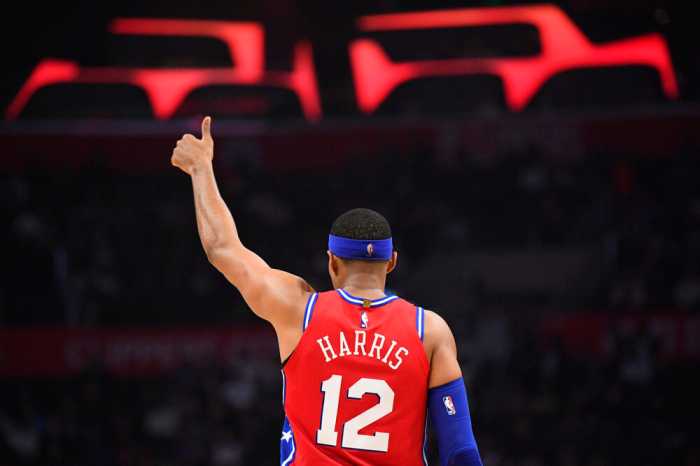The Most Influential Sixers Player in Recent History May Be a Guy Who Never Even Stepped on the Floor
Too often lost in the storybook-like narrative of “The Process” is the events that led up to the era. Electing to collect an immense amount of draft picks at the expense of a team that was not built to win for multiple years was not something the Sixers chose to willingly do- but rather a calculated risk, taken to put themselves in a better future position. The man that led this decision to be the correct one for the sake of the Sixers franchise was Andrew Bynum.
The Andrew Bynum Trade
This fateful trade occurred on August 10th, 2012. It had been five years since the franchise had moved on from Allen Iverson and nine years since the Sixers had advanced past the first round of the playoffs. Caught in what is referred to as “basketball purgatory,” the Sixers lacked the top-end talent to compete for a championship, but continued to stay in the hunt for postseason basketball on a yearly basis. While the five first-round exits and two second-round exits were nice, it took searching outside of the organization to make the roster improvements the Sixers needed. Ultimately they struck up this four-team trade which greatly changed the landscape of the Sixers future:
- Sixers Get:
- Andrew Bynum
- Jason Richardson
- Lakers Get:
- Dwight Howard
- Chris Duhon
- Earl Clark
- Nuggets Get:
- Andre Iguodala
- Magic Get:
- Nikola Vucevic
- Maurice Harkless
- Sixers 2017 First-Round Pick
- Aaron Afflalo
- Al Harrington
- Josh McRoberts
- Chris Eyenga
- Nuggets 2014 First-Round Pick
It first must be noted that Andrew Bynum was who the Sixers were expecting to be trading for when this deal was drawn up. At the time the big man was 24 years old coming off an all-star season where he averaged 18.7 points, 11.8 rebounds, and 1.9 blocks, and had played a valuable role in securing two championship rings with the Lakers. Just coming into his prime, Bynum was expected to be a valuable contributor and a potential franchise centerpiece moving forward.
The Injury Concerns
It was not a no-brainer move for the Sixers as the 7-footer came with some legitimate injury concerns that were known about prior to the trade. In the previous three seasons before coming to the Sixers, Bynum had picked up three different knee injuries including a dislocated kneecap and a torn MCL. There was great frustration from the Lakers with the availability of Andrew Bynum which was the driving force for the trade. The big man was good when he played, but the inability to count on this on a regular basis at such a young age was the cause for concern from LA.
In the year prior to the Sixers trade, Bynum was able to suit up for 60 regular-season games and all 12 of the Lakers’ postseason games. Bynum started getting Synvisc injections into his knee to mimic the synovial fluid in the knee that he lacked. This treatment was effective on the season and motivated the Sixers to take the calculated risk by making the deal.
Shortly after arriving in Philly, it was clear the Synvisc injections were not enough to keep him on the floor, even to start the season. Bynum took a trip to Germany for an Orthokine treatment on both knees in an attempt to rejuvenate his career. This was the same treatment that was effective on his former teammate Kobe Bryant, but it did not produce the same results for Bynum.
In the weeks leading up to his potential debut with the Sixers, it was announced that he had a bruised right knee and would need to miss some time. The timeline for his potential to return to play continued to be pushed back to the point where he suffered a setback in and off-court bowling issue. Bynum made it clear that there was no specific motion or issue that caused the injury but that his knee swelled up after the fact and that this stress was more than he had done in rehab to this point.
Many more attempts to look at solutions to the knee injury were had, but the writing on the wall was clear at this point. Shortly after this shutdown began the reports of degenerative issues in the knee began to surface. Andrew Bynum is still only 34 years old, but has played just 26 total games in the NBA time in the 10 years since the Sixers trade occurred.
How This Changed everything for the Sixers
With Andrew Bynum being in the final year of his contract during this turbulent stretch, it put the Sixers at a crossroads. With their clearly too much risk involved, the Sixers front office, led by GM Tony DiLeo, elected to let Bynum walk and go in a new direction as a franchise. This obviously has proven to be the correct decision, but one that set the organization back nonetheless.
The Sixers were now empty-handed after trading for a player they hoped to be a building block of the franchise. If Andrew Bynum had been the player they hoped the conversation would have likely shifted to finding complimentary players to Bynum, Jrue Holiday, Thad Young, Evan Turner, and the rest of the team. Instead, it was clear that they were much further off from being contenders than they anticipated and that a larger rebuild was necessary.
If there was no Andrew Bynum trade there likely would be no Process at all. Even in the hectic state that the Sixers have at times been, it is hard to argue that their championship chances have not increased since this 2010’s era. Even with another of their expected stars sitting out and multiple others not proving not to be capable at all, the Sixers still sit firmly in the mix for the top of the Eastern Conference with a legitimate generational superstar in hand. Andrew Bynum may not have ever suited up for a game with the Sixers, but his fingerprints can be seen all over the organization.
Icon Sports Media




























